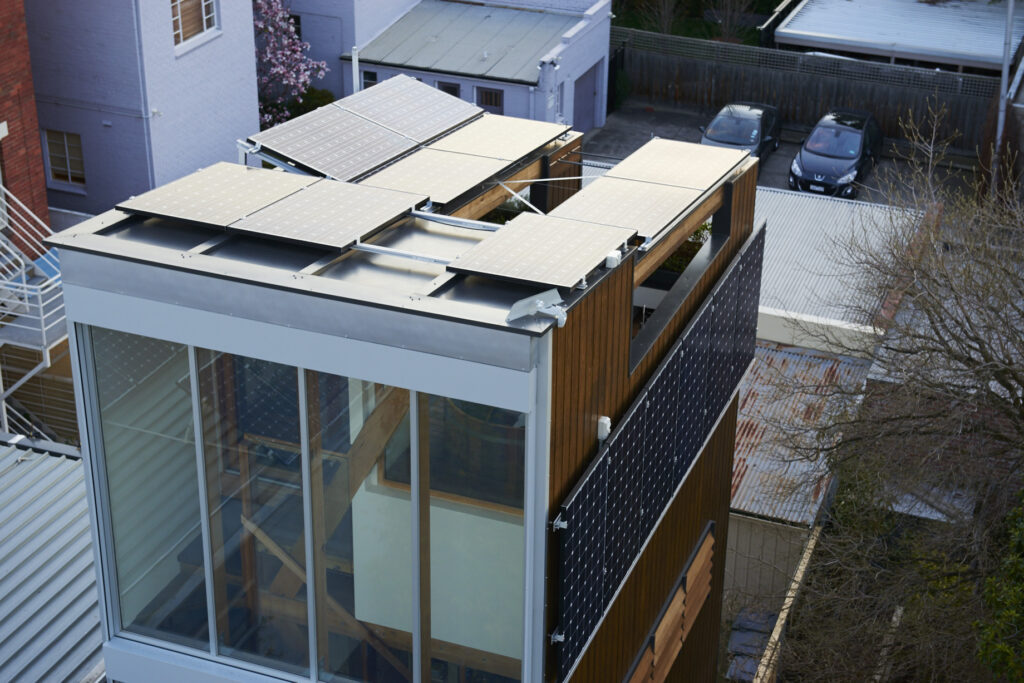Energy Storage
Renewable energy is increasingly positioned as the future of power generation. There is no limit to the energy produced by wind, waves or sun. However, the natural fluctuation of these energy sources mean that times of over- and under-production have inhibited their reliability in comparison to large power grids supported by a base load power plant. Efficient energy storage has been the missing link in renewable energy adoptability. Deep cycle batteries store PV generated electricity and output as direct current (DC) power to be converted by inverters to AC power for residential use. New lithium-ion batteries are lighter for a greater energy density, longer-lasting and lower maintenance. This new efficiency in deep-cycle batteries enables homeowners to manage their self-generated electricity – to balance the consumption and production of their own power. Many companies, from trusted household names like Panasonic to exciting newcomers like Enphase and Tesla, are rolling out lithium-ion batteries for home power storage.
According to the 2015 Climate Council report – Powerful Potential: Battery Storage for Renewable Energy and Electric Cars – Australia is poised to capitalise on our most abundant resource, solar energy. Australia is projected to be one of the most significant markets for battery storage due to the high price of electricity, the already widespread adoption of solar panels, solar feed-in tariffs and that highly available sunshine. The report also notes that battery costs demonstrate a steady approach to affordability, declining in price at an average of 14% each year from 2007 to 2014. An April 2016 article on the predictability of technological progress from Oxford researchers suggests a slightly moderated continuation of this pattern of dropping prices and that this would mean solar energy is on a trajectory to surpass its competition in affordability within 10-20 years. Projections by the International Energy Agency place solar energy as the world’s dominant source of electricity by 2050.
The following are just a handful of upcoming or newly-released storage solutions that will change the state of the residential power market.
The LG Chem Residential Energy Storage Unit (RESU 6.4X) has the undeniable advantage of being one of the first to become readily available and certified for diverse application. This 6.4kWh system lays claim to an extremely long lifespan of 15 to 20 years. Though a good 38 kg lighter than the Tesla Powerwall, it lacks the streamlined appearance. Unlike the plug-and-play simplicity of the Enphase or Panasonic models, LG Chem requires components from elsewhere to integrate with a grid connect solar system.
lgenergy.com.au
Panasonic’s Smart Energy Storage System (SESS) entered the market through a deal with ActewAGL, Ergon Energy and Red Energy for testing, aimed at homes already equipped with solar panels. Not the cheapest, this 6.8kWh PV-battery storage system also has a less-than premium design lifetime of 5,000 cycles, based on an 80% D.O.D. (depth of discharge, describing the degree to which a battery is emptied relative to its total capacity).
panasonic.com/au/consumer
The Enphase Storage System has the largest usable capacity at 95% D.O.D. and the highest round trip efficiency at 96% – energy that can be extracted from a battery as a percentage of the amount of input energy taken to store it. The Enphase System includes a much smaller capacity battery, 1.2 kWh. The modular design, however, means that additional batteries may be added, expanding incrementally to suit the home’s needs. It boasts an all-in-one, plug-and-play system (excluding solar panels) supported by the MyEnlighten app. Envoy homeowners can track the system’s function and consumption/production balance with real time data on their phone or computer. The Enphase system posseses a futuristic aesthetic to rival the Tesla Powerwall and includes a 10 year warranty.
enphase.com.en-au
Tesla’s Powerwall is all about sleek appearance, the prestige of the maker and its low price. For cost and performance, Powerwall upon its announcement, set the frontier for Australia’s battery storage. As yet, there remain unknowns about the Powerwall’s lifetime and some performance characteristics. The home storage system is a sizable 7kWh and, as with the Panasonic, connects to a solar panel set up or the conventional power grid, storing either from the solar panels or charging from the grid at times of cheapest power (typically night-time off-peak rates). Designed to be seen, the wall-mounted units come in a range of colours with a slim exterior.
These rival battery storage products heighten the competition in the renewable energy market – this can only be good news for residential customers and for reduction of greenhouse gas emissions.
teslamotors.com/en_AU/powerwall
Words: Holly Voigt



